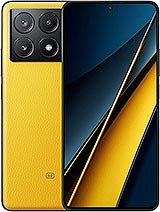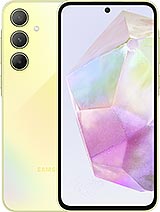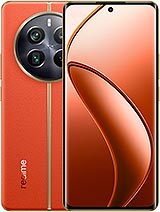Final words, our verdict, pros and cons
The competition
At the time of writing, a base 8GB/128GB Nothing Phone (2a) will set you back around € 330, and you can expect to pay around € 380 for the 12GB/256GB model. Honestly, that sounds quite reasonable and competitive for a phone that arguably offers most of the same experience as its much more expensive Nothing Phone (2) sibling, currently retailing at around € 580.

Let’s look at some of the viable alternatives you have out there in this price bracket, starting with camp Xiaomi. The Redmi Note 12 Pro+ instantly springs to mind. Its base model retails for about as much as the base Nothing Phone (2a) but does come with 256GB of storage. Some other advantages of the Redmi include IP68 ingress protection and Gorilla Glass Victus, a 12-bit, Dolby Vision certified, and notably brighter AMOLED display, as well as much faster 120W wired charging. The camera setup on the Redmi is notably different, and it is hard to say which phone is more versatile in this regard. Performance is also a wash between the two since both phones are rocking “customized” versions of the Dimensity 7200.
If you would rather go for a Qualcomm chip instead and don’t mind sacrificing a few of the aforementioned niceties while saving a few bucks in the process, the Redmi Note 13 Pro is a perfectly viable choice. Or you could even drop down to the Redmi Note 13. Xiaomi has you well covered.

And when we say well covered, we mean it since you could easily go with the Poco X6 Pro instead. It’s only IP54 on this one and Gorilla Glass 5, plus an arguably less potent main camera and slower 67W charging. However, you are getting a more powerful Dimensity 8300 chipset, which might be a priority for, say getting the most performance for your buck.




Xiaomi Redmi Note 13 Pro+ • Xiaomi Poco X6 Pro • Samsung Galaxy A35 • Realme 12 Pro+
Over in camp Samsung, the ever-popular Galaxy A54 instantly comes to mind. However, now that the shiny new Galaxy A55 and A35 are official, we can’t quite bring ourselves to recommend last year’s model with priority. Despite technically being a lower “tier” device, the Galaxy A35 now delivers most of the same features as the A54. This includes things like IP67 ingress protection, Gorilla Glass Victus+ and stereo speakers, a versatile rear camera setup with a 50MP main cam, an ultrawide and a macro. The two phones share the same Exynos 1380 chipset, stereo speakers, 5,000 mAh battery and 25W charging. The Galaxy A35 does have a bigger 6.6-inch, 120Hz AMOLED, but one that lacks HDR support. You have to go with the A54 to get that or up your budget quite a bit and spring for the Galaxy A55 with its aluminum frame and more powerful chipset.
Finally, if you are in the right market, the Realme 12 Pro+ is a pretty strong competitor to the Nothing Phone (2a). Some of its highlights include IP65 ingress protection and faster 67W charging on its 5,000 mAh battery. Most notably, however, the Realme has a dedicated 3x periscope telephoto as part of its camera setup in case that could entice you.
Our verdict
Nothing remains a relatively small operation with a limited portfolio of devices. It is clear that the company is still doing a lot of soul-searching, and if the number of produced device models doesn’t increase, it might take some time to get the “formula” just right. Still, even with a small sample size of only three phones we can safely say that Nothing is seemingly attempting to return to its original roots with the Nothing Phone (2a) and make a more budget or rather midrange device, like the original Nothing Phone (1). That being said, we have to commend the company on preserving much of the experience of the flagship Nothing Phone (2) and carrying it over into the much cheaper Nothing Phone (2a).

Ignoring hardware specs for a bit here, we have to admire the consistency and dedication to the overall design and UX that Nothing is displaying. These are truly the unique parts of the Nothing formula, and they seem to be not going anywhere.

As for the Nothing Phone (2a), we really liked our time with it. As we said, all of the unique Nothing design and aesthetics are there. If it happens to be your particular cup of tea, we can safely say that the Nothing Phone (2a) hardware platform that is powering the experience does not disappoint. There is enough power under the hood to keep everything running smoothly. The display, while not industry-leading, is colorful, vibrant and smooth. The camera setup is also perfectly satisfactory. In general, we found no glaring faults. And sure, you can probably get better value for money in this price bracket, but nothing quite as unique as the Nothing Phone (2a).
Pros
- Unique, eye-catching design with a surprising amount of added functionality from the Glyph Interface.
- Decently bright OLED with 120Hz refresh rate, 10-bit colors and HDR support.
- Great battery life and solid charging speed.
- Unique and cohesive software design and aesthetic with plenty of custom bits yet pretty much zero bloat.
- Great performance with zero thermal throttling.
- Solid all-around camera performance. Good video stabilization and dedicated night mode for video.
Cons
- No charger in the box.
- Incredibly hard to clean back surface that gathers both grease and dust like crazy.
- High refresh rate gaming is not properly supported.
- Night mode for photos has slightly confusing behavior.



